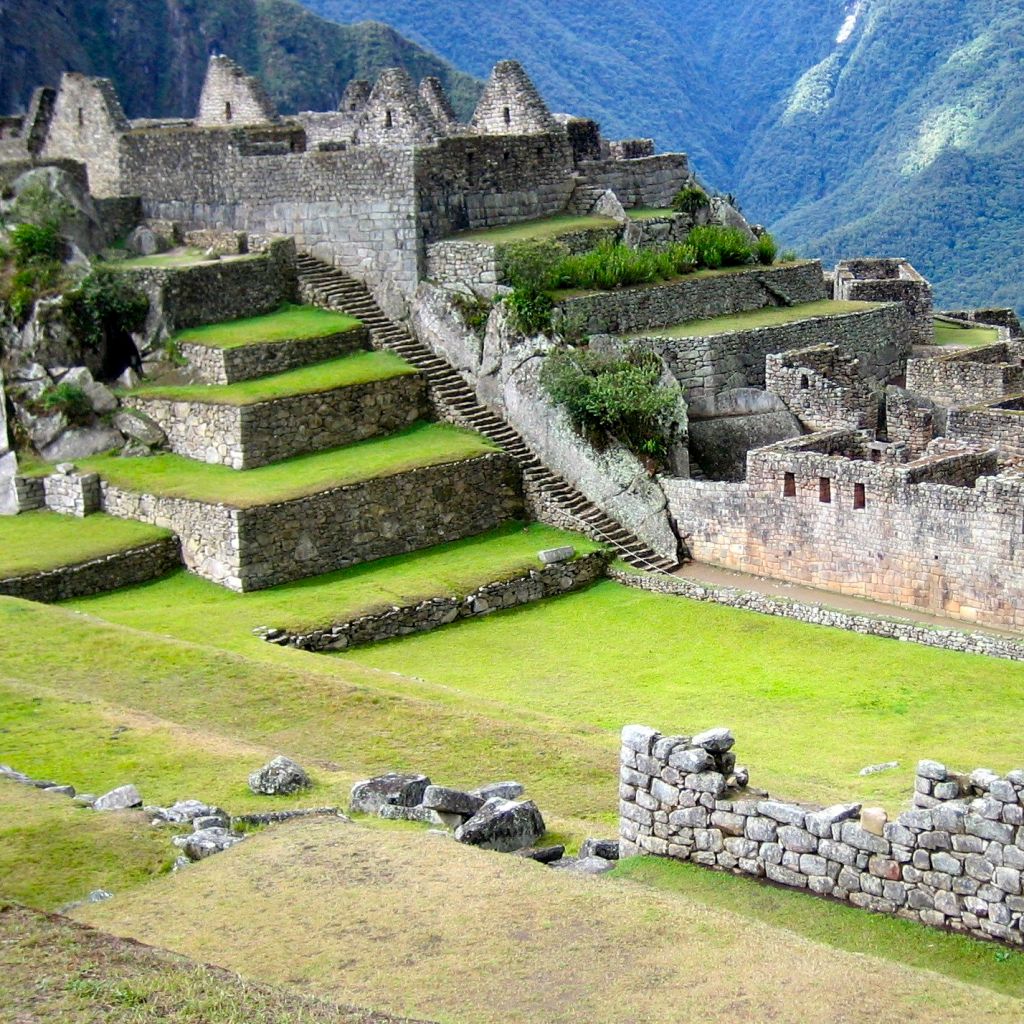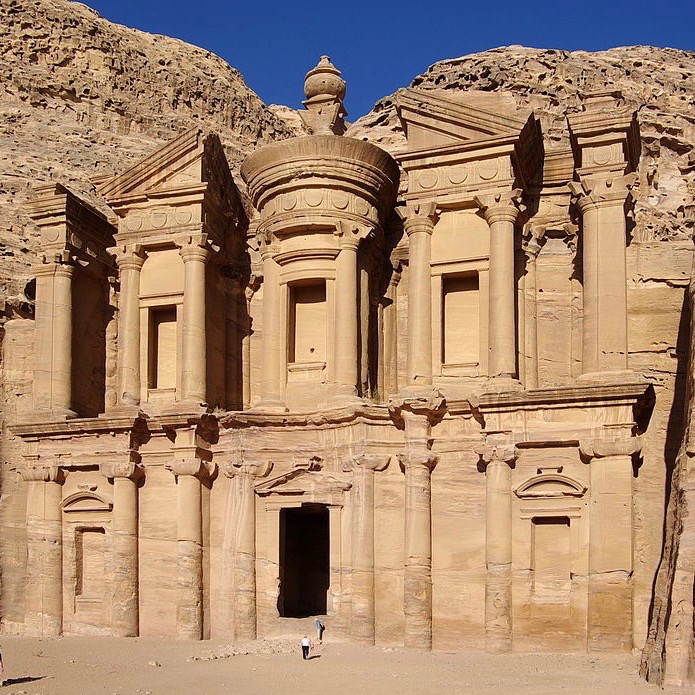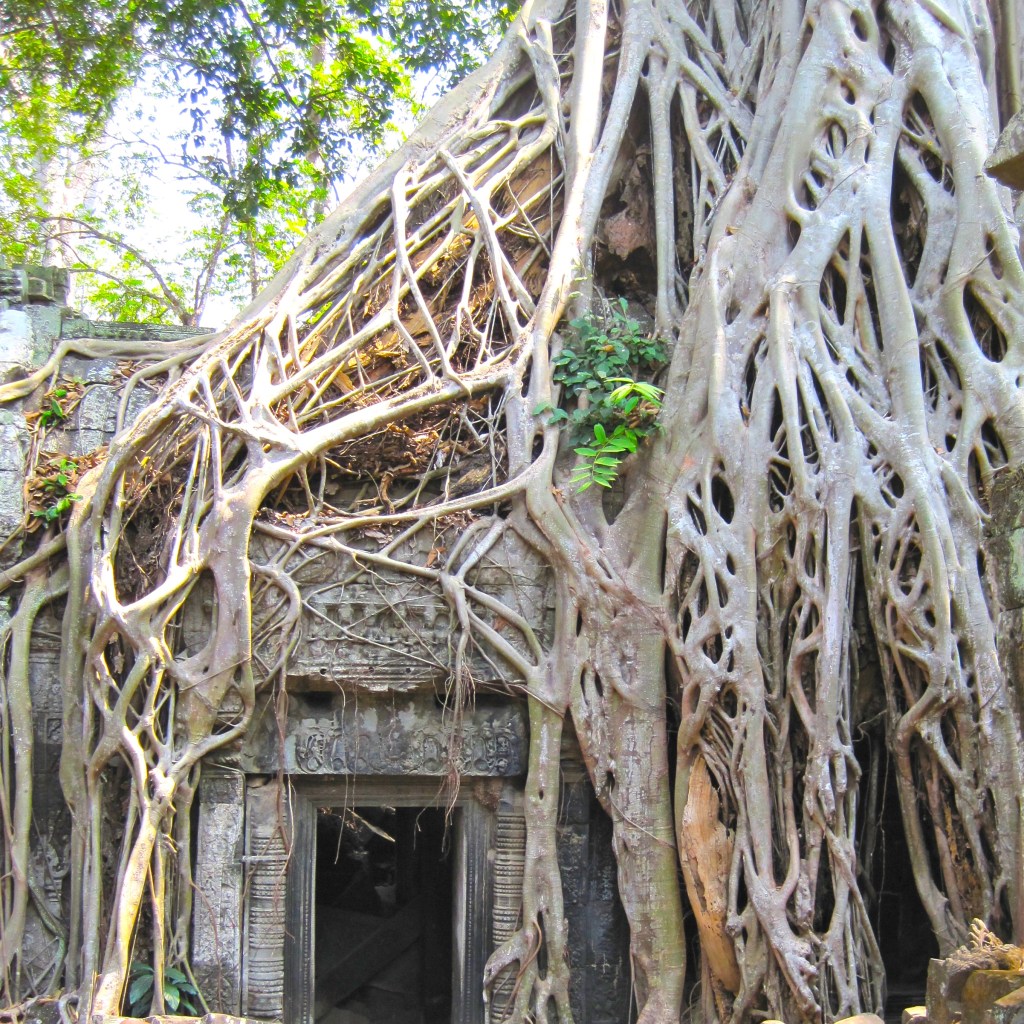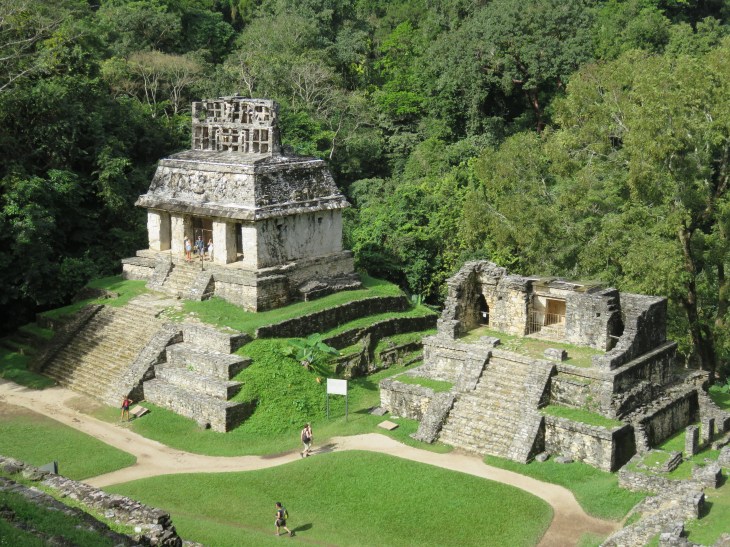



Why is it we have such a romantic fascination with ancient ruins left by civilizations that mysteriously vanished? World renowned locations like Machu Picchu, Petra, Chichen Itza, Angkor Wat, Mesa Verde, and Ephesus are only the tip of the iceberg. Abandoned cities and collapsed cultures are scattered around the globe and throughout human history.
Students of art and architecture are intrigued by the physical remains, but part of the appeal must also be the mysteries they hold.
How could a powerful and sophisticated society just cease to exist?
Was it a sudden collapse caused by natural disasters, or a gradual decline brought about by war, climate change or catastrophic blunders on the part of inept or oblivious rulers?
Ancient ruins are fascinating examples of our ancestors’ ingenuity, but these failed cultures and their mysterious abandoned cities are also stony reminders that despite careful planning, good intentions and our best technology, we can still get it wrong. History has shown that all it takes is some bad luck, poor judgement, and head-in-the-sand complacency.
A city in ruins isn’t necessarily an ideal place to look for the best path forward, but it may be riddled with roads to avoid. And if this is true, we hope this series on vanishing civilizations will be food for thought for all of us.
Happy Trails,
James & Terri
Last Updated September 5, 2023
Photo Credits: Slider Ulvi Safari


I have to say that the future doesn’t bode well for us on current performance. 😦 😦
Jo, from my reading one of the contributing issues in some of these collapses was environmental damage and the associated domino effects from failing to address the root problems. So, I think you’re on the right track here. ~James
Hi Terri and James, Reading your comment, I am hoping and hopeful we are addressing the root problems.
I have often been puzzled by the Riddle of Vanishing Civilizations. Many theories exist. And like you say, “…the mysteries they hold.” I look forward to reading more in this series. Erica
Erica, of course, every individual case is unique and some of these collapses were just bad luck: e.g. natural disasters, drought, and maybe disease. But in many cases, it was a combination of factors, many of which were caused by the society, and could have been changed. ~James
Good point, James, “combination of factors.” Many lessons here for us.
The fascination arises from the magnificence of the architecture. Apparently it lasted longer than the people who created it. Maybe it is meant to inspire us to excellence and inquire into the why the civilizations disintegrated. We have much to learn.
Leslie
Leslie, the collapse can be catastrophic and quick or a gradual decline, but the results are the same. And in addition to the examples with magnificent architecture there may also be a number which hadn’t perfected building in stone, and are even more mysterious. Cahokia and its mounds in the Mississippi River Valley is a good example. But regardless, as you say, we have much to learn. ~James
I’m looking forward to this series. There is so much to be learned from history, if only the powers that be would take notice.
Darlene, most of the problems that kill off cultures are long-term, and I’m afraid that most of our politicians won’t really think beyond the next election cycle. I understand that if they aren’t re-elected they can’t have an impact, but the kick-the-can philosophy is exactly what leads to even more complex and difficult decisions. ~James
This is fascinating James & given the current state our planet is in, I can’t help but feel we are also not paying attention to our environment screaming so very loudly. Yikes!
Lynn, much of the damage to our environment happens gradually, and it takes a long-term view to appreciate what’s truly happening. Most of these cultures that disappeared took centuries to collapse, which is proof that the damage can be irreversible if not addressed at some point. And there’s certainly a lesson there for us today. ~James
If there’s one constant in a world of change it seems to be that we don’t learn from the past. History – one way or another – repeats itself. As long as power and money are important to world leaders, the people will suffer. And, a civilization might decline.
While I’m curious about the reason of cultures vanishing. I’m mostly attracted by what’s left behind. The ruins of Mayan and Aztec civilizations, Mesa Verde, … are pleasing to the eye, the mind, and the camera! Yes, I know I sound like a really tourist just now. 🙂
Liesbet, it’s interesting that many of the advances that made these collapsed cultures successful were also the seeds of their destruction. The Maya’s terraced agriculture produced more food, which enabled an increase in population – which caused a need for more food, etc, etc. At some point, the land was being overtaxed, and then an extended drought was the nail in the coffin.
I’m happy to hear that you’re interested in Mesa Verde, because it’s the subject of our next post. Let me know what you think. ~James
I loved visiting Mesa Verde, so it’ll be interesting to see what you discovered. 🙂
It is interesting to ponder what happened to the most advanced civilizations of their times. Those lost societies all reached a threshold of advancement that they could not get beyond.
I think there is a lesson here for our modern society. The circumstances are different in our technologically connected world. Nonetheless, like those ancient cultures, it seems we are contributing to our own downfall through pollution, overpopulation, deforestation, climate change, and now a global pandemic. – Mike
Mike, your phrase “threshold of advancement” isn’t a concept I’ve thought about in these societies, but I see your point and agree. For instance, even the cleverest of farmers can’t really overcome the problem of depleted soils without some knowledge of plant nutrition.
As to our contributing to our own downfall there’s no doubt. There’s only so much that can be done on an individual level, and ultimately, it comes down to the ruling class to take the long view and make the hard decisions for society as a whole. As I said to someone else, in America today our leaders can’t see beyond the next election, and they leave the difficult, unpopular decisions to someone else. Our reaction to COVID is a perfect example. ~James
Delighted to read about your upcoming series! These architectural treasures are perpetual fonts of learning and exploration. Perhaps instead of calling them ‘failed’ cultures, we can see them as necessary touchstones along a path of evolving civilization and design? Steps forward, then backward, then onward again. The way we’re going, my sense is that 21st C. Western civilization might be classified as overreaching, fragmented and traumatized… but dotted with sparks of ingenuity (and hope) along the way. Wouldn’t it be fascinating to jump into the future to see how 2020 will be designated and studied!
Amit, your comment is very perceptive, and I hope that your optimistic view is correct. My use of the phrase “failed cultures” isn’t really always correct, and some people will take exception to it: the folks of Maya heritage on the Yucatan of Mexico would definitely disagree. Because what actually happens when a city is deserted is that the people don’t disappear, but migrate elsewhere to continue with life. What actually fails is the government structure and all the associated mechanisms of power that kept it going.
As for 2020, I can’t imagine that any of us will come out of this pandemic with thoughts of human invincibility, and hopefully that will set the stage for better approaches in the future. ~James
These Ancient Civilisations are fascinating, they have left behind some spectacular legacies, but also the conundrum of what forces drove them to disappear. I will be looking forward to learning more about them in your upcoming series.
Gilda, Terri and I have always been enthusiastic about ancient ruins and they’ve been the focus of many of our trips, both at home and abroad. One of the logical questions that always comes up is “What happened?” It’s interesting to dig into the research and find the commonalities of war, climate change, environmental damage, and either not recognizing the problems or refusing to do anything about them. I’d like to say we’ve learned our lessons, but I’m not so sure. I hope you enjoy the series. ~James
James and Terri – There is so much to explore in this post! Bruce (husband) has been reading the book ‘1491’ by Charles C Mann, and he gives me daily reports about how wrong we are about many assumptions we make about ancient civilizations. Nicely done – Susan
Susan, I’ve seen this book and I’ll have to put it on my reading list. Other than the Maya and Inca, I’ve only scratched the surface on ancient American cultures and this book will be a great starting point. It sounds like the perfect proof that the victors write the history, and the truth may be something totally different. Thanks for the recommendation. ~James
There is a quote, usually attributed to Samuel Clemens, that comes to mind: “History doesn’t repeat itself, but it often rhymes.”
Ben, a sentiment that is born out over and over – despite all the historians and academics who end up in politics. ~James
I like to think that visiting these ancient ruins can help us learn a thing or two about the civilizations that built them — how they became such great builders and why they eventually collapsed — to avoid making the same mistakes. But history seems to keep repeating itself, one way or another, and we need to keep relearning.
I agree Bama. I was thinking about your part of the world, specifically Borobudur. I read that it was deserted because of Indonesia’s conversion to Islam. I wonder if that was the only reason or was there more to the story? ~James
Actually Borobudur was abandoned far before Islam reached Java. Scholars believe the eruptions of nearby Mount Merapi forced the royal court of Medang (the most prominent Hindu-Buddhist kingdom on the island at that time) to move its capital eastward. Borobudur gradually lost its significance, and the conversion of most of Java into Islam acted as a final blow to this magnificent temple.
Thanks for the info Bama. I suspected there was more to the story. ~James
Awesome photographs. A very interesting topic. One of which I am very interested. I look forward to your future posts and going on this journey with you.
Thanks for the comment Robbie and for dropping by the blog. I’ve visited a number of these sites and am glad to finally get around to blogging about the mystery of their demise. I hope you enjoy the series. ~James
Great post and questions to ponder. Have you read the writing of Jared Diamond? Fascinating stuff. Looking forward to your series!
Yes, I’ve read both “Guns, Germs, and Steel” as well as “Collapse,” and enjoyed both very much. I love his approach of branching out across all the sciences in his research and formulated conclusions that I would never have thought of. His books are so informative for me I usually have to read them in smaller bits so I can digest what I’ve read. Good stuff. Do you have a favorite of his? ~James
Oh to be a timeless traveller. I look forward to Mesa Verde. And back. I visited thirteen years ago, and anticipate revisiting with your guidance. The positive thing is that despite te ruins,we’re still here,and still learning.
Shane, like you I visited Mesa Verde years ago and was impressed with how it looked. This time around I tried to understand why it looked the way it does and what happened to the people who built it. I hope you enjoy the post. ~James
This certainly is a timely topic; I’m looking forward to your posts. I’ve toyed with the thought that, while learning from the past is valuable, it’s also possible that past mistakes, circumstances, or errors in judgment aren’t necessarily relevant in our current situation.
It’s hard to articulate, but I wonder: are we in the process of making mistakes that haven’t been made before, simply because our radically different technological world is shaping us into radically different people? There’s a wealth of literature focusing on the ways that the internet and social media, once believed to be a way to bring people together, actually is separating us, and moving us backward. Perhaps some of these early societies didn’t so much fail to progress, as fail to deal with the consequences of the progress they made. We certainly aren’t coping well with the consequences of some of our own advances.
Linda, thanks very much for this thought provoking comment. I’ll have to think about this one. But, I take your point about advanced technology and today’s society making mistakes that haven’t been made before.
In the case of the internet, it’s the classic case of unintended consequences. I’ve never seen this written, but I suspect that the more complex the technology is, the more likely it is to have lots of unintended consequences, and only in retrospect do we realize where we went wrong. I guess this is why we pine for the “Good Ol’ Days.”
And in early societies, there really were only 2 groups: the peasants who lived a subsistence lifestyle and could only react to stay alive, and the ruling class who made the big decisions with no real risk themselves. In this scenario, I’m afraid the king has to shoulder the blame for mistakes. Unfortunately, for vanished cultures, the reality of the mistakes came too late. ~James
James & Terri
Great post! I have always been intrigued by ancient civilizations and how they met their respective demises. Some are pretty obvious (the Spanish bringing illness and destruction of the Inca’s governmental and belief systems). Others are more prolonged and subtle (the Roman Empire).
Regardless, it is so intriguing of the lives that were led and how these civilizations thrived!
Dave, most of the famous civilizations that have vanished have been around for hundreds of years and their decline was gradual. So, they were doing lots of things right (like the Romans), but in most cases, we’re only able to see the mistakes after decades have passed. The Maya are a good example of this idea. Ultimately their success led to too many mouths to feed, and the land available for farming just couldn’t support them. Their mistake was trying to produce more than the land could provide, and there was no recovering from the ecological damage that resulted. ~James
“…catastrophic blunders on the part of inept or oblivious rulers” and “.. bad luck, poor judgment, and head-in-the-sand complacency.” Scary words right now. Hoping that less oblivious leaders, better judgment, and some heads removed from the sand can help us turn this ship around.
Amen Lexie. In the past few years there’s been such a focused and concerted effort to overturn policies that were put in place to make improvements that I wonder how long it will take to just get back to where we were. And this applies on so many issues that it’s depressing to even consider. But, I’m almost afraid to say it, there’s hope in the air. Let’s keep our fingers crossed for a change. Hopefully, rational minds will prevail. ~James
Natural disasters, drought, and disease…nature itself is hard to deal with, people another story altogether.
I agree Karen. All of these ancient cultures had nature to struggle with for sure, but the human element usually came into play as well – especially when god-like rulers lost sight of who actually kept the kingdom running. ~James
I’m enjoying your series and your perspectives. We, too, have wondered why civilizations disappear. Lack of water, tribal feuds, no buffalo — whatever it is, we, too always ask guides what happened to the people here? Love the pictures and the reflection.
Rusha, when we decided to do this series and started our research, we were amazed by how many of these “vanished” cultures there are around the world. We have visited many of the ruins and were intrigued, but what’s left behind really only demonstrates how the people lived. The follow-on question is why they disappeared. It’s humbling to say the least, and hopefully the series will give our readers pause for thought like it do us. ~James
Fascinated by this. Civilisation Lost on history channel has it in a nutshell if you can find it
Thanks for the comment and for dropping by the blog. There are so many mysteries and unanswered questions about lost civilizations that make them great grist for the entertainment mill. I’ve watched a few of these and it’s always fun to be able to see some of the evidence visually instead of just read about it. And it doesn’t hurt that the history channel always adds the “Raiders of the Lost Ark” touch. ~James
Lovely to see your work!
We saw a great documentary on Petra last night. Stone masons carved a sample facade in limestone in California and figured out a lot of the secrets to it. Fascinating. On another subject, Turns out there were big earthquakes in Petra that destroyed a lot of water pipe infrastructure.
Rebecca, I saw a documentary about Petra’s construction as well. It’s interesting that the iconic buildings there were carved instead of stone-built. I don’t remember the details, but the show I saw used laser tech to determine that the carving was done from the bottom up, which makes sense. Once the Romans arrived the building techniques changed to more what you’d expect. Interesting stuff. ~James
Yes, it was fascinating how the facades were carved out of the rock itself.